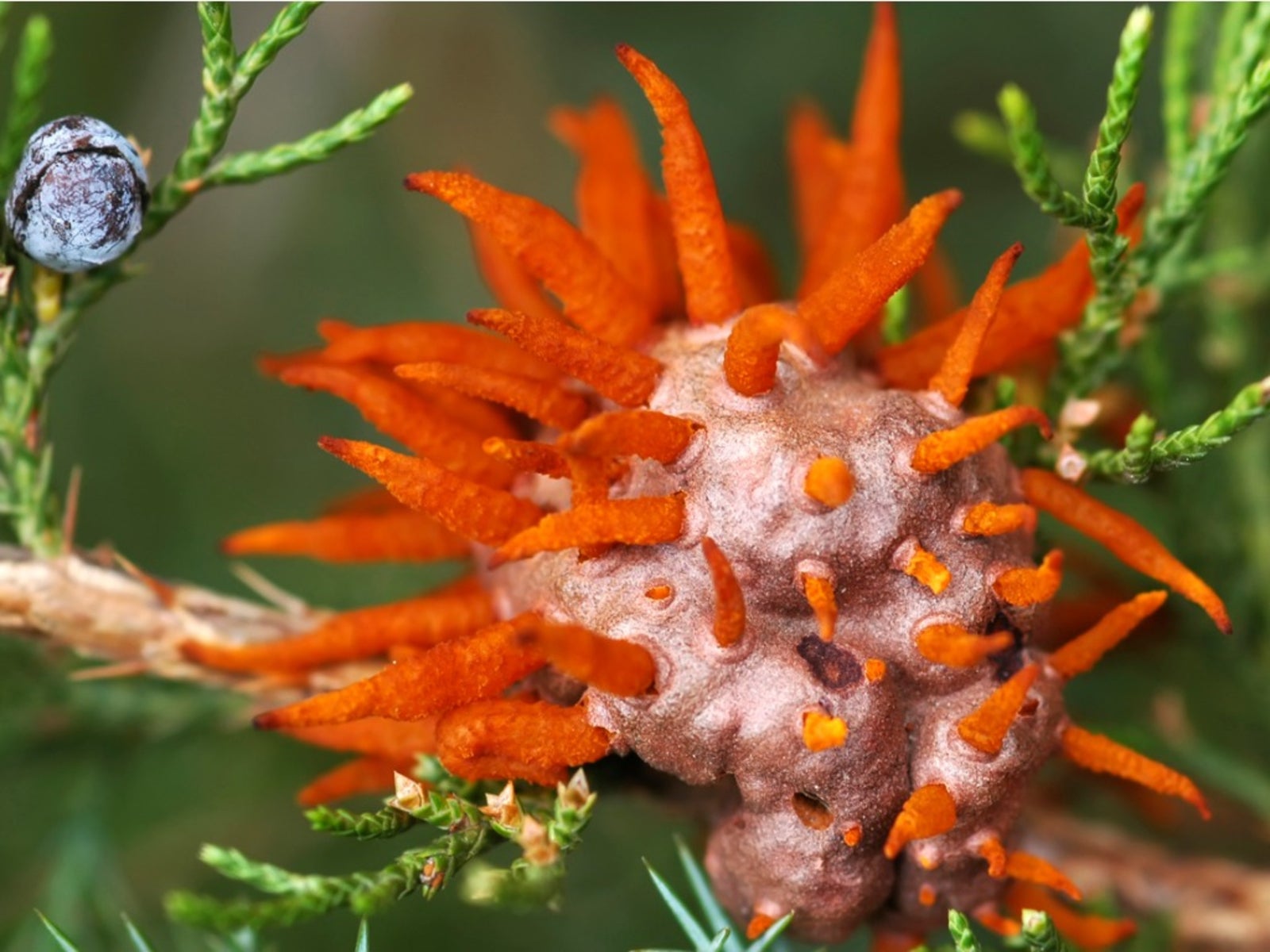Tips For Cedar Apple Rust Control


If you're noticing unusual looking, green-brown growths on your cedar tree or having a bad apple crop, you may have been infected by cedar apple rust disease. While this fungal disease causes more damage to apples than it does cedar, it's still important to learn how to prevent its occurrence.
What is Cedar Apple Rust?
Cedar apple rust, or CAR, is a peculiar fungal disease that affects both apple trees and red cedar. Spores from one tree only affect the other and vice versa. For instance, the spores on apple trees only infect cedar while the spores found on cedar trees only affect apples. This disease can quickly defoliate apple trees and cause blemishes on the fruit.
Signs of Cedar Apple Rust Disease
CAR fungus overwinters in large, brown galls (called cedar apples). Following the warm spring rains and during the pink apple blossoming stage, these galls begin to form gelatin-like tendrils (telia) that within months produce fungal spores that are released in summer. These spores travel, land, and germinate on apple trees in a continuous back and forth cycle. While adequate moisture is necessary before apples become infected, rust lesions may begin to appear on the leaves and fruit within one to two weeks following infection. With apple, it first appears on the foliage as small, greenish yellow spots that gradually enlarge, becoming orange-yellow to rust colored with a band of red. The undersides of the leaves begin forming the spore-producing lesions, which are cup-like in nature. They may also appear on the young fruit, leading to malformation of the fruit. On cedar, the upper and inner foliage becomes infected in summer with small greenish brown galls. These continue to grow in size, turning a dark brown by autumn and then overwintering in the tree until spring.
Cedar Apple Rust Control
While there are cedar apple rust fungicides available for its control, the best method of control is to prevent cedar apple rust from spreading. Galls may be removed from trees before reaching the telia stage by pruning them from the cedar trees in late winter. Removal of any nearby red cedar (usually within a two-mile radius) and the use of resistant apple varieties can also help. Of course, removing all the cedars may not be practical for everyone, so using cedar apple rust fungicides would then be your best recourse. These fungicides should be applied periodically during the pink stage of apple bud development and continued throughout the season to protect emerging leaves and developing fruit. Most recommended schedules and fungicides are available through local extension services.
Sign up for the Gardening Know How newsletter today and receive a free copy of our e-book "How to Grow Delicious Tomatoes".

Nikki Tilley has been gardening for nearly three decades. The former Senior Editor and Archivist of Gardening Know How, Nikki has also authored six gardening books.